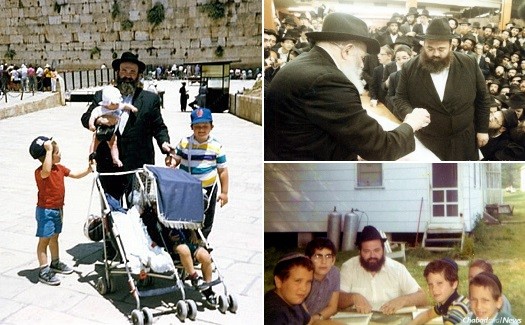
New Torah to Honor Rabbi Levi Yitzchok Schapiro, Educator and ‘Good Friend to All’
Rabbi Avremi Schapiro was just 7 when his father passed away 25 years ago, but he carries on his legacy.
“One of my memories of my father,” says Schapiro, who serves as a Chabad-Lubavitch youth director in Wisconsin, “is being whisked upstairs in the evenings so that people coming to try on clothing he gave out for free wouldn’t be ashamed.”
A beloved educator in the Bronx and in Brooklyn, N.Y., Rabbi Levi Yitzchok Schapiro passed away suddenly in 1990 at the age of 41.
Twenty-five years later, his family and students have commissioned the writing of a brand-new Torah in his honor.
Levi Yitzchok Schapiro was born in 1949 in Paris. The Schapiro family was among the thousands of Jewish refugees from Russia who had slipped under the Iron Curtain in the chaotic years following World War II; they made their way to Ohio, to Cleveland. His father, Rabbi Lipa Schapiro, was a highly respected Torah scholar, and his mother, Chana, was the scion of a family steeped in Chassidic teachings.
As a young teen, Levi Yitzchok traveled to Brooklyn, where he studied at the Lubavitcher Yeshiva Tomchei Tmimim on Bedford Avenue. He went on to advance his studies at the yeshivah’s branches in Newark, N.J., and then at the Central Chabad Headquarters at 770 Eastern Parkway in the Crown Heights neighborhood of Brooklyn.
Levi Yitzchok had a penchant for collecting sefarim—Hebrew books of Torah content. Even after a tragic fire burned his collection, he didn’t despair and began again from scratch, building a library that would fill his home from wall to wall. He also had a deep love for the Land of Israel and visited as often as he could.
In 1972, at age 22, he married to Pessie Rodan from the nearby neighborhood of Borough Park. The couple settled in the Crown Heights neighborhood of Brooklyn, where Rabbi Schapiro began teaching.
Upon the advice of the Rebbe—Rabbi Menachem M. Schneerson, of righteous memory—he accepted a teaching position in the Lubavitcher Yeshiva Achei Tmimim in the Bronx, and thus began a career in education that would span the next two decades.
Schapiro’s success is evident in the fact that after only two years, he was honored at a special luncheon that Achei Tmimim arranged in appreciation of his devoted work. He later became principal of the Bais Chana school for girls in the Bronx as well.
When Chabad spirited thousands of young Jewish boys and girls out of Iran prior to and immediately following the 1979 revolution, the young educator, who had developed a name for his care of and devotion to his young charges, was recruited by the National Committee for the Furtherance of Jewish Education to work with the recently arrived boys. He became a father figure to many of those who had left their families behind. At this time, he also taught at the Lubavitcher Yeshiva on Ocean Parkway in Flatbush, Brooklyn.
When a family in the Bronx decided to transfer their children to a more advanced school in Brooklyn, he took the sweltering New York subway regularly to tutor them in Yiddish and other subjects they’d need to know. Then, after they had made the transition, he would come after a full day of teaching to assist them with their homework.
In 1980, he was recruited by Educational Institute Oholei Torah on Crown Heights, where he was to remain as a teacher and eventually assistant principal for 10 years.
‘There to Help’
Beyond the classroom, Schapiro arranged and participated in melaveh malkahpost-Shabbat meals for his students, as well as tutored, counseled, comforted and advocated on their behalf.
Keenly aware of his students’ needs, he quietly purchased a pair of shoes when he found out that a student was absent because he lacked footwear. When a child came to school without a coat, he rigged a “surprise raffle,” awarding the winner a new coat from a local clothier. Eventually, he began operating Keren Label Kahan, a full-scale operation that distributed clothing to those in need.
After the Rebbe spoke publicly about the importance of children memorizing chapters of the Mishnah by heart, he began a school-wide campaign to encourage and reward its study. In time, the model was replicated in camps and schools all over the world.
On one occasion, when teachers’ paychecks were late to arrive, he used his house as collateral to advance them their salaries. On another occasion, an acquaintance happened to mention to him that he needed a substantial sum of money for his business. The next day, Rabbi Schapiro brought him the full amount needed.
In 1982, after 10 years of marriage, following a blessing from the Rebbe, the Schapiros had their first child, a son, whom they named Avraham Noach (Avremi). He was followed by Nochum (Nuchie), Schneur Zalman (Zalmy) and Aidel (Aidie).
Then, on Sivan 24, 5750, in the summer of 1990, the rabbi suddenly passed away, leaving behind a grieving widow with four small children, in addition to hundreds of students who felt as if they had lost their best friend.
“Rabbi Levi Yitzchok Schapiro was a good friend to all of us,” lamented principal Rabbi Hershel Lustig following the shiva. “From the smallest to oldest, this week we felt as if we had lost a good friend. Every student and every teacher felt that they lost a good friend.
“If there was a student who had trouble understanding his work, Rabbi Schapiro was there to help him. If there was a student who had problems with other students, Rabbi Schapiro was there to help him. If there was a student who was not successful or who needed someone to be close to him, Rabbi Schapiro was there to do this.”
The writing of the new Torah began last summer in Chabad-Lubavitch of South La Cienega (SOLA) in Los Angeles, where Nuchie is an active member. It will soon be completed and welcomed this Sunday, May 31, at The Shul Bayside in Milwaukee, where Rabbi Avremi serves as youth director.
The Torah dedication will be unique in that children will carry out many of the important roles normally reserved for adults. They will lead the recitation of the “Atta Haraita” celebratory verses, and take a lead position in the singing and dancing to follow.
“My father loved children, and he loved Torah,” says Rabbi Avremi, “and I am sure this is how he would have wanted it.”
To learn more or to participate, visit schapirotorah.com.

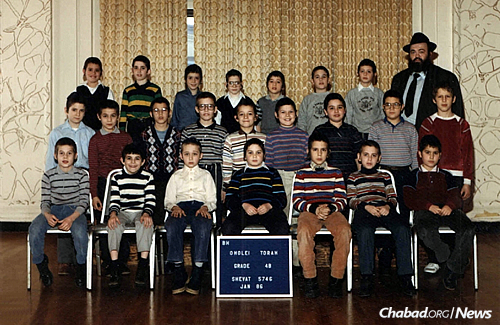
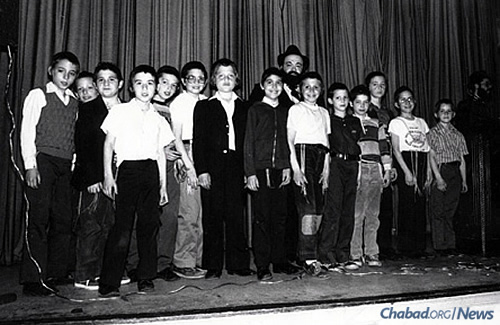
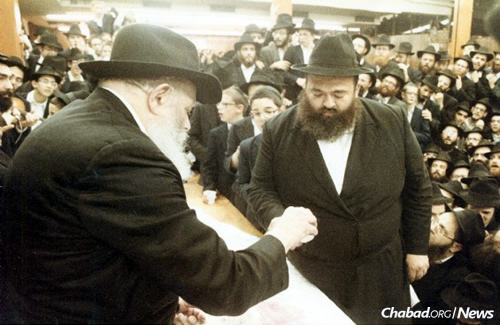
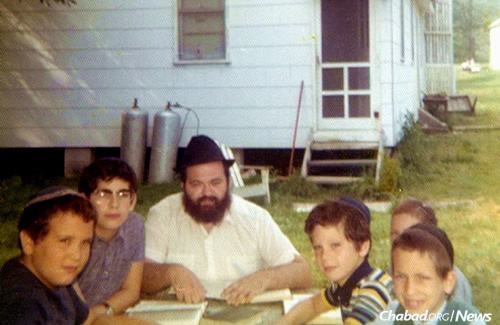

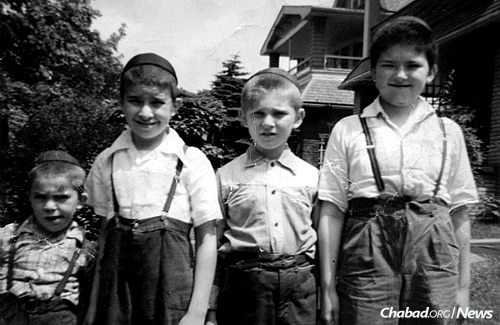




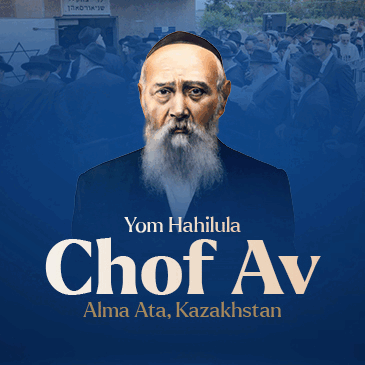











Ma Rabbi
I remember R Levi Yitzchak A”H well.
He was a devoted chosid and a very kind man.
I have bought a word in the Sefer Torah being written in his memory and I encourage everyone to do so.
A REALLY nice person!
I remember Rabbi Shapiro. He was SO kind and always looking to help others. May his memory be a blessing, and may he have yiddishe nachas from ALL his children.
a friend
The completion of R’ Levi Yitzchoks sefer torah, took place Sunday in Bayside Wisconsin where Rabbi Avremi Shapiro and his wife Shaindy and children are beloved shluchim. With much joy and celebration, with all of R’ Levitche’s siblings tzu langeh yohr and many of their children and grandchildren, and close out of town friends in attendance.
The emotion and the simcha in the air was palpable at every moment.
Starting with the many children who attend R’Avremi’s Sunday Hebrew school, to 100’s of community members and friends, shluchim from all over Wisconsin and Illinois-all lined up to participate in the final writing.
It was a silent and emotional crowd who listened as R’ Avremi shared the story of their private blessing and instruction from the Rebbe when at the conclusion of shiva the four orphans and their widowed mother passed the Rebbe for “dollars”. Avremi who was only seven at the time, heard his mother tell the Rebbe zy”a
“די קינדער האבן נישט א טאטע”, and the Rebbe answered her pointing heavenwards, אבינו שבשמים איז זייער טאטר. R’ Avremi explained that many community friends have asked him how he remained a Torah committed Jew having lost his father so very young and this answer from the Rebbe, he said, was his strength then and still today.
A spontaneous ani maamin filled the air with song as the large crowd of 100s linked arms and sang for a long time, paying homage to a special man and his enduring legacy.
With the final inking of the final letter a triumphant cry of mazal tov burst forth and lively chassidic music filled the air as the procession danced its way from the home of R’Avremi to The Shul of Bayside.
Ecstatically joyous hakafot were held in The Shul, and an abundant seudah was hosted by R’Avremi and Shaindy for all who joined in the celebration.
so sad
miss him…
wish he followed his doctors instructions